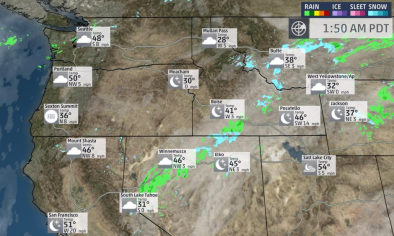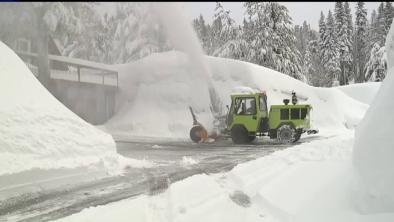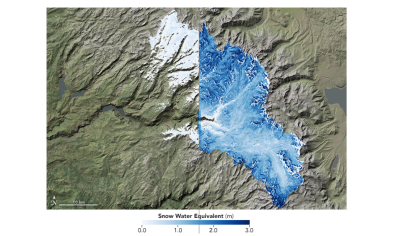Science Source
Testing the recent snow drought as an analog for climate warming sensitivity of Cascades snowpacks
- States that record low snowpack conditions were observed at Snow Telemetry stations in the Cascades Mountains, USA during the winters of 2014 and 2015
- Tests the hypothesis that these winters are analogs for the temperature sensitivity of Cascades snowpacks
- States that in the Oregon Cascades, the 2014 and 2015 winter air temperature anomalies were approximately +2 °C and +4 °C above the climatological mean
- Uses a spatially distributed snowpack energy balance model to simulate the sensitivity of multiple snowpack metrics to a +2 °C and +4 °C warming and compares modeled sensitivities to observed values during 2014 and 2015
- Finds that for each +1 °C warming, modeled basin-mean peak snow water equivalent (SWE) declined by 22%–30%, the date of peak SWE (DPS) advanced by 13 days, the duration of snow cover (DSC) shortened by 31–34 days, and the snow disappearance date (SDD) advanced by 22–25 days
- Results show that the hypothesis is borne out only by the peak SWE observations
- Results indicate that rather than just temperature, the magnitude and phasing of winter precipitation events, such as large, late spring snowfall, controlled the DPS, SDD, and DSC
Related Content
Headline

May 15, 2017 | The Weather Channel
With More Snow on the Way, Some Western Snowpack is Still at Record Mid-May Levels
Headline

May 5, 2017 | Los Angeles Times
Central California towns in trouble if Sierra snowpack melts too fast
Headline

Apr 30, 2017 | The Washington Times via Associated Press
Heat wave melting record snowpack in Northern California
Headline

Apr 26, 2017 | Climate Central
California Got More Snow This Winter Than Past 4 Total


